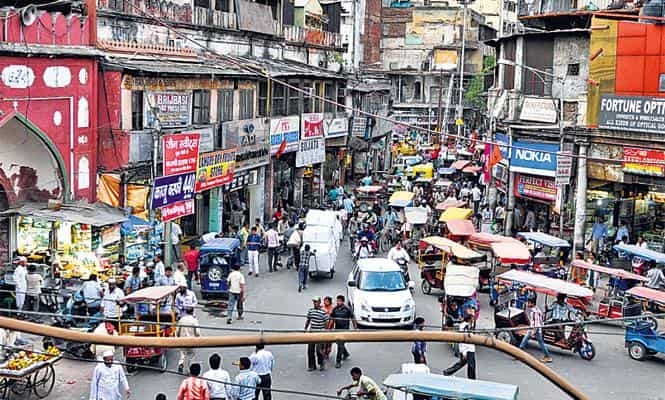After 50 years, trams likely to make a comeback in Chandni Chowk
From 1908 to 1963, trams chugged amidst tongas, cycle-rickshaws and bicycles in Old Delhi, but will the old charm be able to provide a safe commute and reduce vehicular population is something that experts need to look at.
More than half a century after they were phased out to make way for automobiles, trams are likely to make a comeback on the busy streets of the Walled City.

This is part of the Shahjehanabad Redevelopment Project, which seeks to restart trams along with non-motorised vehicles at Chandni Chowk and its neighbouring areas.
Lieutenant Governor Najeeb Jung gave in-principle approval to the project in March. It is now with the UTTIPEC, the agency that gives final approval to transport and infrastructure projects in the Capital, which is looking at its technical feasibility. While the PWD already has a detailed project plan prepared by a private consultant, sources said the DMRC may also prepare its own detailed project report once it is officially roped in by Delhi government to execute the project.
From 1908 to 1963, trams chugged amidst tongas, cycle-rickshaws and bicycles in Old Delhi, but will the old charm be able to provide a safe commute and reduce vehicular population is something that experts need to look at.
Thanks to the Delhi Metro, footfall at Chandni Chowk and other neighbouring markets has increased 60-70% in the past few years. With another metro station slated to open near Red Fort crossing by this yearend, traders fear there would no space left for people to move on streets.
“There is an urgent need to convert Chandni Chowk into a pedestrian area and restrict the movement of vehicles by constructing multi-level parking lot in the north of Town Hall. Tram is a good proposal,” said Sanjay Bhargava, general secretary, Chandni Chowk Sarvavyapar Mandal.
While the bigger plan is to have the same network of about 20-kilometers as the Walled City had in the first half of the 20th century, it will connect Esplanade Road with Sadar Bazar. Trams connected Asaf Ali Marg, Paharganj, Old Delhi Railway Station and Chandni Chowk between 1908 and 1963. PWD sources said INTACH has worked out the tram route.

The trams will run between 8am and 8pm. The project envisage a tram station every 300-350 metres.
While the high court is hearing arguments on making Chandni Chowk a non-motorised vehicle (NMV) zone by different groups, PWD officials said they are going to file an affidavit on running trams and the NMV together in the area.
“The project is on a very nascent stage right now,” said a senior PWD official. Once the Court gives its go-ahead the PWD may rope in Delhi Metro Rail Corporation for technical expertise and operations.
Transpor t exper t Nalin Sinha said slow speed of trams along with the availability of non-motorised vehicles and space for pedestrians will just be perfect for an area as congested as the walled city.





